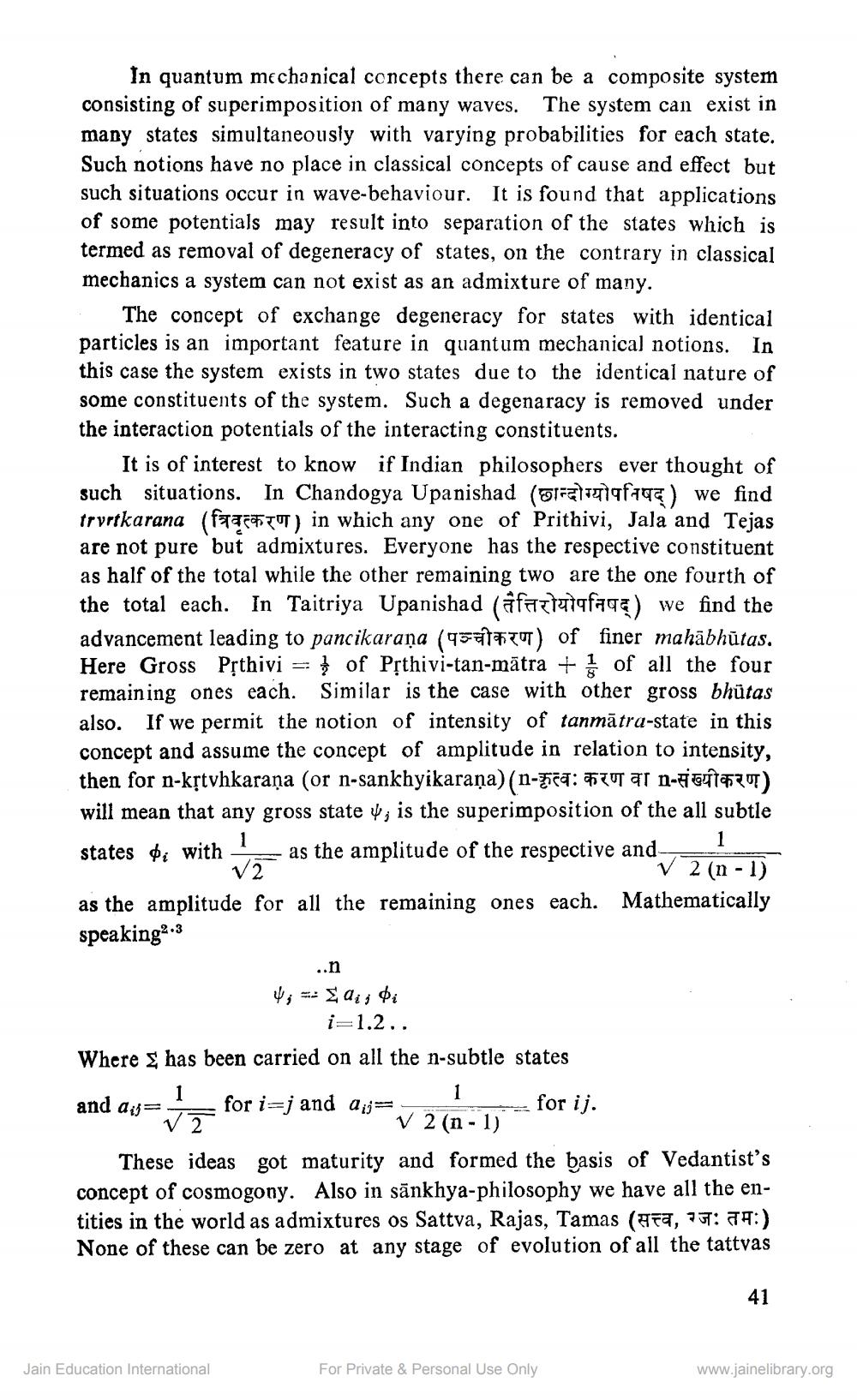________________
In quantum mechanical concepts there can be a composite system consisting of superimposition of many waves. The system can exist in many states simultaneously with varying probabilities for each state.
uch notions have no place in classical concepts of cause and effect but such situations occur in wave-behaviour. It is found that applications of some potentials may result into separation of the states which is termed as removal of degeneracy of states, on the contrary in classical mechanics a system can not exist as an admixture of many.
The concept of exchange degeneracy for states with identical particles is an important feature in quantum mechanical notions. In this case the system exists in two states due to the identical nature of some constituents of the system. Such a degenaracy is removed under the interaction potentials of the interacting constituents.
It is of interest to know if Indian philosophers ever thought of such situations. In Chandogya Upanishad (Trasf79) we find frvrtkarana (fata FITU) in which any one of Prithivi, Jala and Tejas are not pure but admixtures. Everyone has the respective constituent as half of the total while the other remaining two are the one fourth of the total each. In Taitriya Upanishad (afattatafaqa) we find the advancement leading to pancikarana (9581*70) of finer mahābhūtas. Here Gross Ppthivi = of Pệthivi-tan-mātra + 1 of all the four remaining ones each. Similar is the case with other gross bhūtas also. If we permit the notion of intensity of tanmātra-state in this concept and assume the concept of amplitude in relation to intensity, then for n-krtvhkaraņa (or n-sankhyikaraña)(n-fica: Tut ar n-86977307) will mean that any gross state y; is the superimposition of the all subtle states di with as the amplitude of the respective and 12
* V 2 (n-1) as the amplitude for all the remaining ones each. Mathematically speaking2.3
1
4;=: Sain di
i=1.2.. Where has been carried on all the n-subtle states and ass=_ for i=j and dj=
for ij.
V 2 (n - 1) These ideas got maturity and formed the basis of Vedantist's concept of cosmogony. Also in sānkhya-philosophy we have all the entities in the world as admixtures os Sattva, Rajas, Tamas (+a, 757: 74:) None of these can be zero at any stage of evolution of all the tattvas
A
2
41
Jain Education International
For Private & Personal Use Only
www.jainelibrary.org




